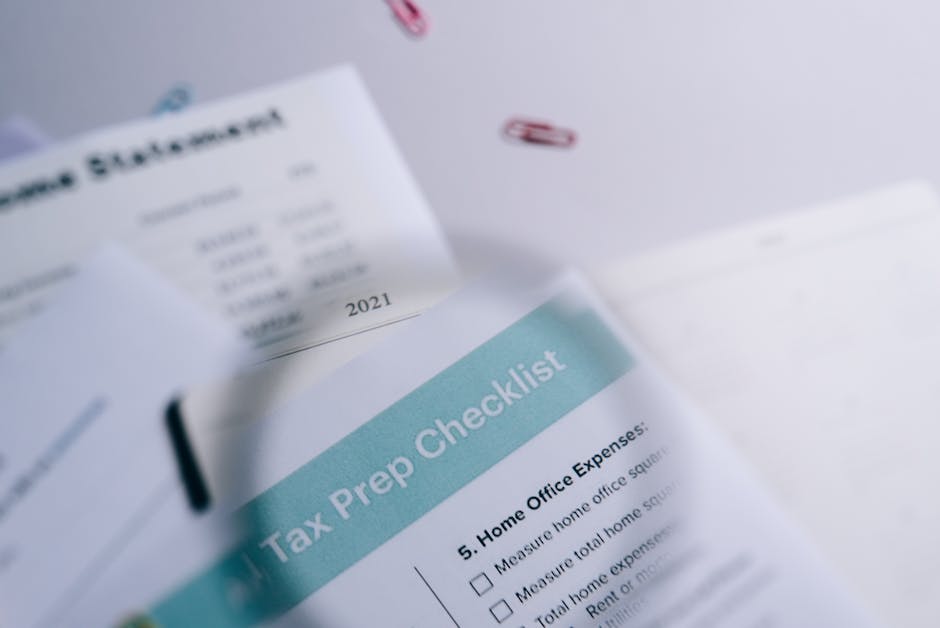Mastering Tax Planning & Compliance for Small Businesses
Tax Planning & Compliance are key elements in successfully managing a small business. To start, it’s important to understand the difference between the two:
- Tax Compliance:
- Focuses on income and transactions that have already taken place.
- Involves filing accurate tax returns on time.
- Can often be handled online for straightforward cases.
- Tax Planning:
- Involves year-round strategies to minimize taxes and maximize savings.
- Essential for complex financial situations like owning a business, property, or making special investments.
- Often requires consulting with a professional for custom strategies.
Understanding these basics ensures you comply with tax laws while making strategic financial decisions that benefit your business.
I’m Russell Rosario, a fractional CFO and CPA with expertise in Tax Planning & Compliance. With a background in developing AI-driven business solutions, I help small businesses steer complex tax regulations with ease. Let’s explore the crucial steps to master tax planning and compliance.

Simple guide to Tax Planning & Compliance terms:
- business planning services
- corporate consulting services
- strategic business consulting
Step 1: Understand the Basics of Tax Planning & Compliance
What is Tax Planning?
Tax Planning is the art of arranging your financial affairs to minimize your tax liability. It’s about making strategic decisions throughout the year to ensure you pay the least amount of tax possible.
Key elements of tax planning include:
- Minimizing Taxes: The goal is to reduce your overall tax bill. This could involve contributing to retirement accounts, making charitable donations, or timing the sale of investments.
- Financial Analysis: Understanding your financial situation is crucial. This involves analyzing income, expenses, and investments to identify tax-saving opportunities.
- Timing of Income: When you receive income can affect your tax rate. For instance, deferring a bonus to the following year could lower your tax bracket.

What is Tax Compliance?
Tax Compliance is about meeting your tax obligations accurately and on time. It involves adhering to all federal and state regulations to avoid penalties and interest.
Key aspects of tax compliance include:
- Filing Deadlines: Knowing when your tax returns are due is critical. Missing deadlines can result in hefty fines.
- Accurate Returns: Ensure that all information on your tax return is correct. Errors can trigger audits and additional taxes.
- Meeting Obligations: This means paying any taxes owed by the due date and keeping up with quarterly estimated tax payments if you’re self-employed.
Federal and State Regulations: Tax laws vary by jurisdiction. Staying updated on both federal and state tax regulations is essential for compliance.

By understanding these basics, you can better steer the complexities of tax laws and make informed decisions that benefit your financial health.
Step 2: Stay Up-to-Date with Tax Laws and Regulations
Keeping up with tax laws and regulations is crucial for Tax Planning & Compliance. Laws change frequently, and staying informed ensures you remain compliant and can take advantage of new tax-saving opportunities.
Monitoring Changes
The tax landscape is always evolving. Federal and state governments often update tax laws, which can affect your tax planning and compliance strategies.
- Federal Updates: The IRS regularly updates tax codes and regulations. For instance, changes in tax brackets or deductions can impact your filing.
- State Updates: Each state has its own tax laws. Changes at the state level can affect your overall tax liability. For example, some states may introduce new tax credits or adjust their tax rates.
- Regulatory Environment: The overall regulatory environment includes not just tax laws but also compliance requirements. Staying aware of these changes helps you avoid penalties and fines.
One way to monitor these changes is by subscribing to newsletters from reputable tax advisory firms or using government resources like the IRS website.
Utilizing Technology
Technology can simplify the process of staying up-to-date with tax laws and regulations. Tools and services designed for tax compliance can help you keep track of changes and ensure you’re meeting all requirements.
- Tax Software: Modern tax software is equipped with features that automatically update based on new tax laws. These tools can help you file accurate returns and identify tax-saving opportunities.
- Professional Services: Engaging with tax professionals can be invaluable. They stay current with all regulatory changes and can provide personalized advice. For instance, the team at Profit Leap specializes in various tax planning and compliance matters.
- Digital Records: Using cloud storage and digital record-keeping can make it easier to manage documents and ensure you have all the necessary paperwork ready for tax season.
By leveraging technology and professional services, you can stay informed and compliant, making your tax planning and compliance efforts more effective.
Step 3: Develop a Comprehensive Tax Strategy
Creating a comprehensive tax strategy is essential for achieving your financial goals and maximizing tax savings. Here’s how to get started:
Timing of Income and Expenditures
Timing is crucial in tax planning. By strategically timing your income and expenses, you can significantly reduce your tax liability.
- Income Timing: If you expect to be in a lower tax bracket next year, consider deferring income. This could include delaying bonuses or other income until the following tax year.
- Expenditure Planning: Plan your expenditures to maximize deductions. For instance, prepaying mortgage interest or making charitable contributions before year-end can increase your deductions for the current year.
A real-life example: A business owner might delay invoicing clients until January to defer income to the next tax year, reducing their current year’s tax bill.
Investment Portfolio Considerations
Your investment portfolio plays a significant role in your tax strategy. Focus on tax-efficient investments and consider capital gains and tax loss harvesting to optimize your tax situation.
- Tax-Efficient Investments: Choose investments that offer tax advantages. For example, municipal bonds are often exempt from federal taxes and sometimes state taxes.
- Capital Gains: Be mindful of when you sell investments. Holding assets for more than a year qualifies you for the lower long-term capital gains tax rate. The IRS outlines the current rates, which vary based on your income.
- Tax Loss Harvesting: Use losses to offset gains. If you have investments that have lost value, selling them can offset capital gains from other investments, reducing your overall tax bill.
A case study from KPMG highlights how tax gain-loss harvesting can effectively manage a portfolio’s tax impact. By offsetting gains with losses, you can lower your taxable income, making your investments more tax-efficient.
By focusing on timing and investment considerations, you can develop a tax strategy that aligns with your financial goals and maximizes your tax savings. Next, we’ll dig into maintaining accurate records and documentation to support your tax strategy.
Step 4: Maintain Accurate Records and Documentation
Keeping accurate records is essential for Tax Planning & Compliance. It helps you stay organized, ensures audit readiness, and simplifies the filing process.
Essential Documents
To maintain compliance, you need to keep a variety of records:
- Income Records: Keep all forms of income documentation, such as W-2s, 1099s, and other earnings statements. These records verify the income reported on your tax returns.
- Expense Receipts: Store receipts for deductible expenses like business purchases, medical expenses, and charitable contributions. These documents support your deductions and credits.
- Investment Statements: Maintain records of your investment transactions. This includes purchase and sale confirmations, dividend receipts, and year-end statements. These documents help in calculating capital gains and losses.
A small business owner named Sarah found that keeping detailed records of her income and expenses not only simplified her tax filing but also helped her make better financial decisions throughout the year.
Using Technology for Record-Keeping
Leveraging technology can make record-keeping more efficient. Here’s how:
- Digital Records: Switch from paper to digital records. Scanning receipts and saving documents electronically can save space and improve organization.
- Cloud Storage: Use cloud storage solutions like Google Drive or Dropbox to store your records securely. Cloud storage ensures that your documents are accessible from anywhere and are safe from physical damage.
- Accounting Software: Tools like QuickBooks or Xero can automate many record-keeping tasks. These programs can track income, expenses, and generate financial reports, making it easier to stay compliant.
Sarah also transitioned to using accounting software, which automated her invoicing and expense tracking. This phased approach helped her team adapt without stress, as highlighted in the bookkeeping best practices from Profit Leap.
By keeping accurate records and utilizing technology, you can ensure your Tax Planning & Compliance is streamlined and efficient. Next, we’ll discuss the benefits of consulting with tax professionals to further improve your tax strategy.
Step 5: Consult with Tax Professionals
Benefits of Professional Consultation
Consulting with tax professionals can significantly improve your Tax Planning & Compliance efforts. Here’s why:
1. Expert Guidance: Tax advisors and compliance experts have specialized knowledge that can help you steer complex tax laws. They can provide insights that you might not be aware of, ensuring that you make informed decisions.
2. Personalized Strategies: Professionals can tailor tax strategies to your specific financial situation. Whether you’re an individual with unique investments or a business owner with diverse income streams, a personalized approach can maximize your tax savings.
3. IRS Representation: If you face an audit or any issues with the IRS, having a tax professional represent you can be invaluable. They understand the intricacies of tax law and can effectively communicate with the IRS on your behalf.
4. Peace of Mind: Knowing that a professional is handling your taxes can reduce stress. You can be confident that your tax returns are accurate and that you’re taking advantage of all possible deductions and credits.
For instance, a small business owner consulted a tax professional and discovered several tax credits he was eligible for but had previously overlooked. This saved him thousands of dollars and improved his business’s financial health.
Choosing the Right Professional
Selecting the right tax professional is crucial. Here are key factors to consider:
1. Credentials: Ensure that the individual is qualified. Look for certifications such as Certified Public Accountant (CPA) or Enrolled Agent (EA). These credentials indicate that the professional has met rigorous standards and is up-to-date with tax laws.
2. Experience: Experience matters. Choose someone who has a proven track record with tax situations similar to yours. For example, if you own a small business, find a CPA with experience in that sector.
3. Specialization: Some tax professionals specialize in specific areas, such as estate planning, international tax, or small business taxes. Select a professional whose expertise aligns with your needs.
4. References and Reviews: Ask for references or read online reviews. Hearing from other clients can give you an idea of what to expect and whether the professional is a good fit for you.
5. Continuing Education: Tax laws change frequently. Ensure that your tax professional engages in continuing education to stay current with the latest regulations and best practices.
For example, a freelancer found a tax professional who specialized in self-employment taxes. This specialist helped her steer the complexities of her tax situation, ultimately saving her money and ensuring compliance.
By consulting with tax professionals, you can leverage their expertise to optimize your Tax Planning & Compliance. This proactive approach not only saves you money but also provides peace of mind, knowing that your taxes are in capable hands.
Next, we’ll address some frequently asked questions about tax planning and compliance to further clarify these essential concepts.
Frequently Asked Questions about Tax Planning & Compliance
What is the difference between tax planning and tax compliance?
Tax planning and tax compliance are two sides of the same coin, but they serve different purposes.
Tax Planning is a proactive process. It involves strategizing to minimize your tax liability throughout the year. This could include timing your income and deductions, investing in tax-efficient accounts, and taking advantage of tax credits. For instance, contributing to a 401(k) or an IRA can reduce your taxable income.
Tax Compliance is reactive. It’s about following the rules and regulations set by tax authorities. This includes filing your tax returns accurately and on time, reporting all income, and paying any taxes owed. For example, ensuring that your W-2 or 1099 forms are correctly reported on your tax return falls under tax compliance.
How do you maintain tax compliance?
Maintaining tax compliance involves several key steps:
-
Stay Informed: Keep up-to-date with federal and state tax laws. Changes can happen frequently, and staying informed helps you avoid penalties. You can subscribe to newsletters from tax authorities or use tax software that updates automatically.
-
Accurate Record-Keeping: Maintain detailed records of all income, expenses, and financial transactions. This includes W-2s, 1099s, receipts, and bank statements. Good record-keeping ensures that you can substantiate all claims on your tax return.
-
Meet Deadlines: Be aware of all tax filing deadlines, including quarterly estimated taxes if you’re self-employed. Missing deadlines can result in penalties and interest charges.
-
Use Technology: Use tax preparation software or hire a tax professional to ensure accuracy. These tools can help you catch errors that might otherwise be missed.
-
Regular Reviews: Schedule regular check-ins with your tax advisor to review your financial situation and ensure ongoing compliance. This can help you adjust to any changes in tax laws or your financial situation.
What does tax planning include?
Tax planning involves several strategies aimed at minimizing your tax liability. Here are some key components:
-
Timing of Income and Deductions: Adjust when you receive income and incur expenses to benefit from lower tax rates. For instance, you might defer a bonus to the next tax year if you expect to be in a lower tax bracket.
-
Investment Strategies: Choose tax-efficient investments. For example, holding onto investments for more than a year can qualify them for lower long-term capital gains tax rates. Also, consider tax loss harvesting, which involves selling losing investments to offset gains.
-
Retirement Contributions: Contribute to tax-advantaged accounts like 401(k)s, IRAs, or HSAs. These contributions can reduce your taxable income and grow tax-deferred or tax-free.
-
Utilizing Tax Credits: Take advantage of available tax credits, such as the Earned Income Tax Credit (EITC) or education credits. Credits can directly reduce the amount of tax you owe.
-
Estate Planning: Plan your estate to minimize taxes for your heirs. This might involve setting up trusts or making gifts within the annual exclusion limits.
By understanding and implementing these strategies, you can effectively manage your Tax Planning & Compliance to optimize your financial health.
Conclusion
Mastering Tax Planning & Compliance can seem daunting, but with the right strategies and tools, it becomes manageable and even beneficial for your financial health.
At Profit Leap, we specialize in changing complex tax regulations into actionable insights that align with your business goals. Our expertise in business intelligence and AI advisory services allows us to deliver customized solutions custom to your needs.
Business intelligence is at the heart of what we do. By leveraging advanced analytics, we help you make informed decisions that drive growth and efficiency. Our AI advisor tools provide predictive insights, ensuring you stay ahead of regulatory changes and optimize your tax strategies.
We also offer custom dashboards that give you a clear and comprehensive view of your tax landscape. These dashboards integrate data from various sources, providing you with real-time updates and actionable insights. This transparency helps you maintain compliance effortlessly while identifying opportunities for tax savings.
Our focus on customized insights means that we don’t believe in one-size-fits-all solutions. We work closely with you to understand your unique challenges and goals, crafting strategies that maximize your tax efficiency and compliance.
By partnering with Profit Leap, you can steer the complexities of tax planning and compliance with confidence. Let us help you turn tax into a strategic asset for your business.
Ready to transform your tax strategy? Visit our services page to learn more and get started today!


